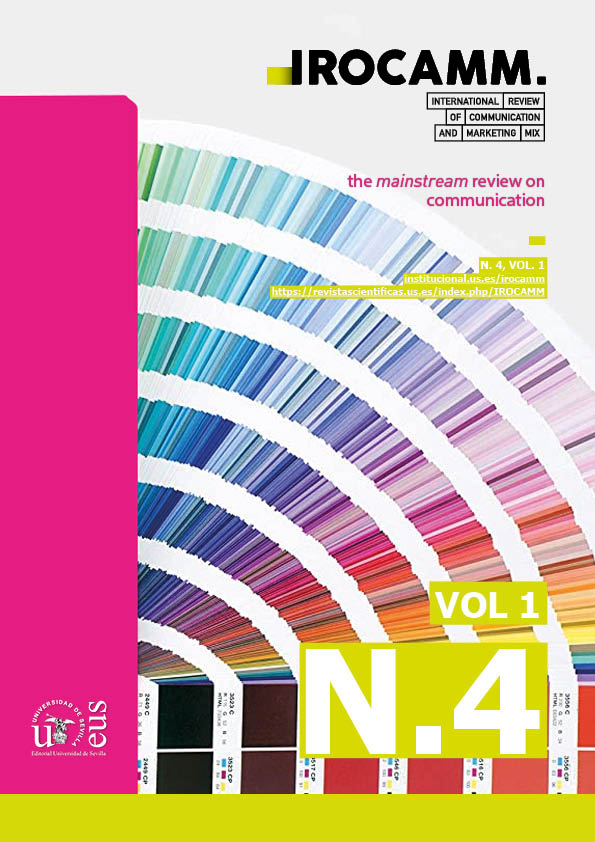Abstract
El activismo en el mundo árabe ha sido representado en la clandestinidad. Destaca el uso de la caricatura, que ha sido un elemento clave, debido a que a través de símbolos el caricaturista era capaz de convertirse en un activista de la pluma. No obstante, con el desarrollo del ciberespacio esa fuente de activismo marcada en el papel se tradujo a la red, haciendo que la caricatura cobrara aún más importancia al poder transmitir ideas de una manera más directa, al mismo tiempo que desarrollaba una forma de activismo virtual. Por ello, este trabajo pretende estudiar y analizar la historia de la caricatura árabe para ver su cristalización en una forma de activismo revolucionario, así como también pretende reflejar cómo se ha generado una comunidad virtual en torno a ello. Se ha usado una metodología cualitativa, empleando un método histórico que permita recolectar informacion sobre la historia de las caricaturas en el mundo árabe. Luego, se ha desarrollado un método visual etnográfico que permita estudiar el uso de las caricaturas usadas. Por tanto, los resultados y la discusión esperados son demostrar que la caricatura es una forma de revolución y activismo, que se ha afianzado con el uso de internet.
Palabras clave: Dibujo, revolución cultural, Árabe, identidad cultural, medio de comunicación de masas.
Abstract:Activism in the Arab world have been represented in hiding. One of the most important forms has been political cartoons which have been an important tool that has been consolidated over time because cartoonists were able to become activists thanks to the use of symbols. However, the development of cyberspace translated cartoons into the network, by making them even more important as they transmitted ideas in a more direct way and developed a form of virtual activism . Therefore, the aim of this research is to study and analyze the history of the Arab political cartoons to see how it has consolidated in a form of revolutionary activism. Additionally, the attempt to this research is to reflect how a virtual community has been generated around that figure. As a result, a qualitative methodology has been used to carry out this research. A historical method has been used to collect information about the history of cartoons in the Arab world. Then, an ethnographic visual method has been developed to study the use of cartoons used. The results and discussion are to demonstrate that the cartoon is a form of revolution and activism which has strengthened itself with the use of the internet.
Literaturhinweise
AFP (2011). Arab Spring Provides Inspiration to Regional Cartoonists. Al-Arabiya. Recuperado el 28 de octubre de 2013, de http://www.alarabiya.net/articles/2011/12/04/180731.html
Buḥāʾ, Ŷ. (2013). Al-Kārīkātīr yuṭārid Bašār al-Asad bi-ʾakṯar min 3000 lawḥa sājira. Al- Arabiya. Recuperado el 11 de julio de 2014, de http://www.alarabiya.net/articles/2013/01/16/260835.html
Butsch, R. y Livingstone, S. (2013, 15 de agosto). The Meanings of Audiences: Comparative Discourses. Routledge.
Cardoso, G. (2010). Los medios de comunicación en la sociedad en red: filtros, escaparates y noticias (2ª ed.) Barcelona: UOC.
Castells, M. (2009). Comunicación y poder. Barcelona: UOC.
Douglas, R. (n. d.) Cartoons and the historian. The Political Cartoon Society. Recuperado el 5 de mayo de 2014, de http://www.original-political- cartoon.com/history/cartoons-and-the-historian.html
Douglas, A., y Malti-Douglas, F. (1994). Arab Comics: Politics of an Emerging Mass Culture. Bloomington, Ind: Indiana University Press.
Eko, L. S. (2012). New Media, Old Regimes. Case Studies in Comparative Communication Law and Policy. Lanham, Maryland: Lexington Books.
El Bendary, M. (2010, 1 de marzo). The Egyptian Press and Coverage of Local and International Events. Lexington Books.
El Din, G. E. (2005, 7-13 de julio). A radical shake-up? Al-Ahram Weekly Online. Recuperado el 3 de febrero de 202o, de https://web.archive.org/web/20141006092131/http://weekly.ahram.org.eg/2005/750/eg4.htm
El-Jisr, B. (1988). Caricatures arabes. En M. Krifa, O. Oussedik, J. P. y Hondet L'Institut du monde arabe presente: caricatures arabes / auteur-concepteur de l'exposition, Michket Krifa; exposition réalisée par le Département des Actions culturelles de l'Institut du monde arabe; Jean-Pierre Hondet et Ouardia Oussedik. París: L‘Institute du Monde Arabe.
Ferzat, A. (n. d.). Ali Ferzat. Recuperado el 3 de febrero de 2020, de http://www.ali-ferzat.com/ar/comic/key_word/الرسم%20بالكلمات/612.html
Halasa, M. (2012, junio). Creative dissent. Index on Censorship. Vol. 41 Issue 2, p14- 25.
Hammond, A. (2005). Pop Culture Arab World!: Media, Arts, and Lifestyle. ABC-CLIO.
Kishtainy, K. (1985). Arab Political Humour. Londres: Quartet Books
Krifa, M. (1988). Naissance de la caricature en Egypte. En M. Krifa, O. Oussedik y J. P. Hondet L'Institut du monde arabe presente: caricatures arabes auteur-concepteur de l'exposition, Michket Krifa; exposition réalisée par le Département des Actions culturelles de l'Institut du monde arabe; Jean-Pierre Hondet et Ouardia Oussedik. París: L‘Institute du Monde Arabe.
Kushkush, I. (2013). Cartoonist‘s Pen leaves Mark across Arab World. New York Times. Recuperado el 28 de octubre de 2013, de mobile.nytimes.com/2013/06/08/world/Africa/cartoonists-pen-leaves-a-mark-across- the-arab-world.html?from=artsdesign
Mitchell, T. (1989). Culture Across Borders. Middle East Report. 19/4: 4-6, 47.
Moubayed, Sami M. (2006). Steel & Silk: Men & Women Who Shaped Syria 1900- 2000. Cune Press.
Müge Göçek, F. (1998). Political Cartoons in the Middle East. Princeton: Princeton University.
Salti, O. (2012). Caricaturas y Viñetas. Arte de Burla y Crítica para Todos los Públicos. Revista Culturas 8. Recuperado el 30 de enero de 2015, de http://revistaculturas.org/wp-content/uploads/2012/09/culturas8_pdf.pdf
Samaha, J. (1988). La caricature ou “le pierre et le rire”. En M. Krifa, O. Oussedik, J. P. y Hondet L'Institut du monde arabe presente: caricatures arabes / auteur- concepteur de l'exposition, Michket Krifa; exposition réalisée par le Département des Actions culturelles de l'Institut du monde arabe; Jean-Pierre Hondet et Ouardia Oussedik. París: L‘Institute du Monde Arabe.
Syrian Revolution Arts (2012). Facebook. Recuperado el 11 de julio de 2014, de https://www.facebook.com/Syrian.Revolution.Arts/timeline
Wichhart, S. (2009). Propaganda and protest: Political cartoons in Iraq during the Second World War. En R. Scully y R. Quartly (Eds.) Drawing the Line. Using Cartoons as Historical Evidence. Melbourne: Monash University ePress.

Dieses Werk steht unter der Lizenz Creative Commons Namensnennung - Nicht-kommerziell - Weitergabe unter gleichen Bedingungen 4.0 International.
Copyright (c) 2021 IROCAMM-International Review Of Communication And Marketing Mix

